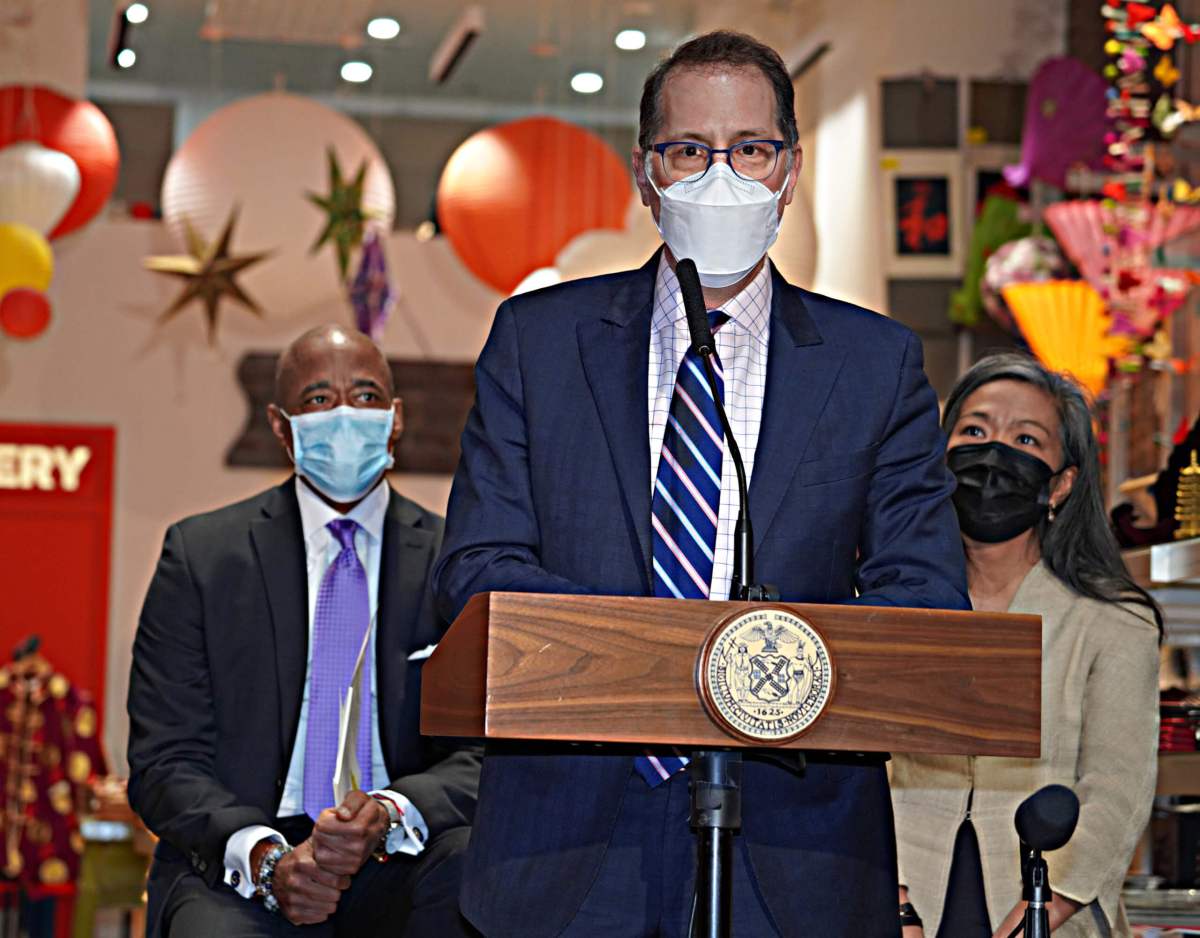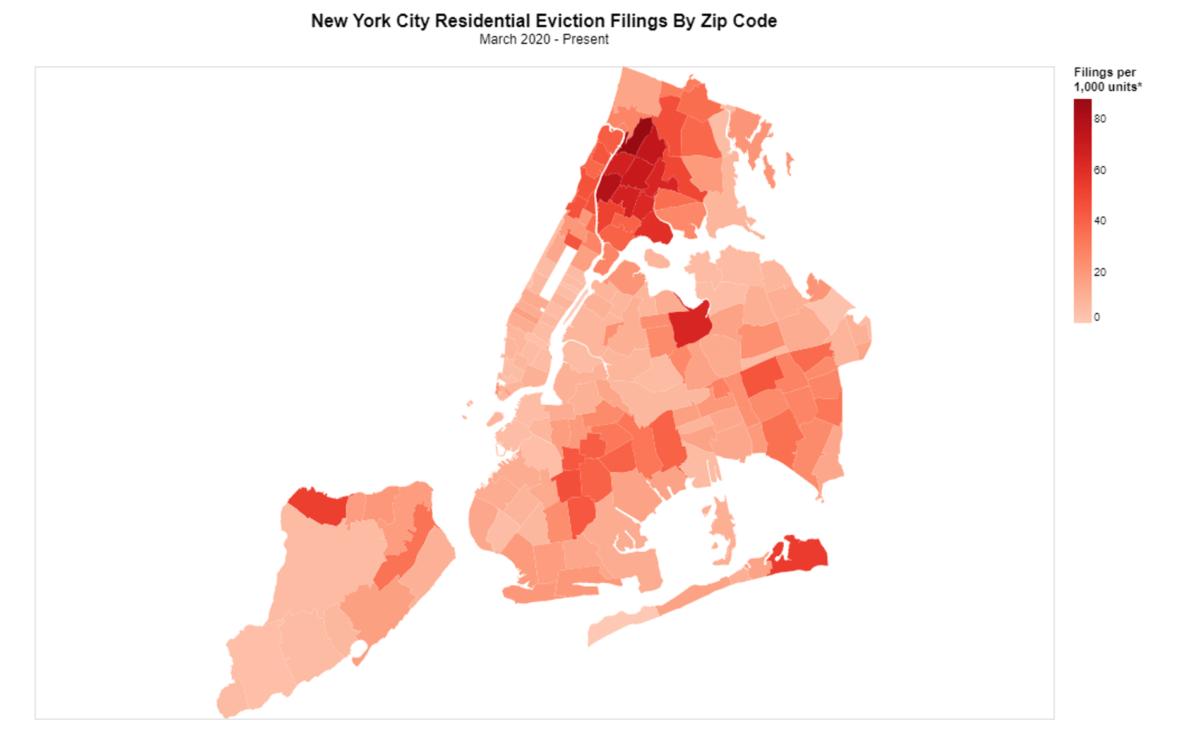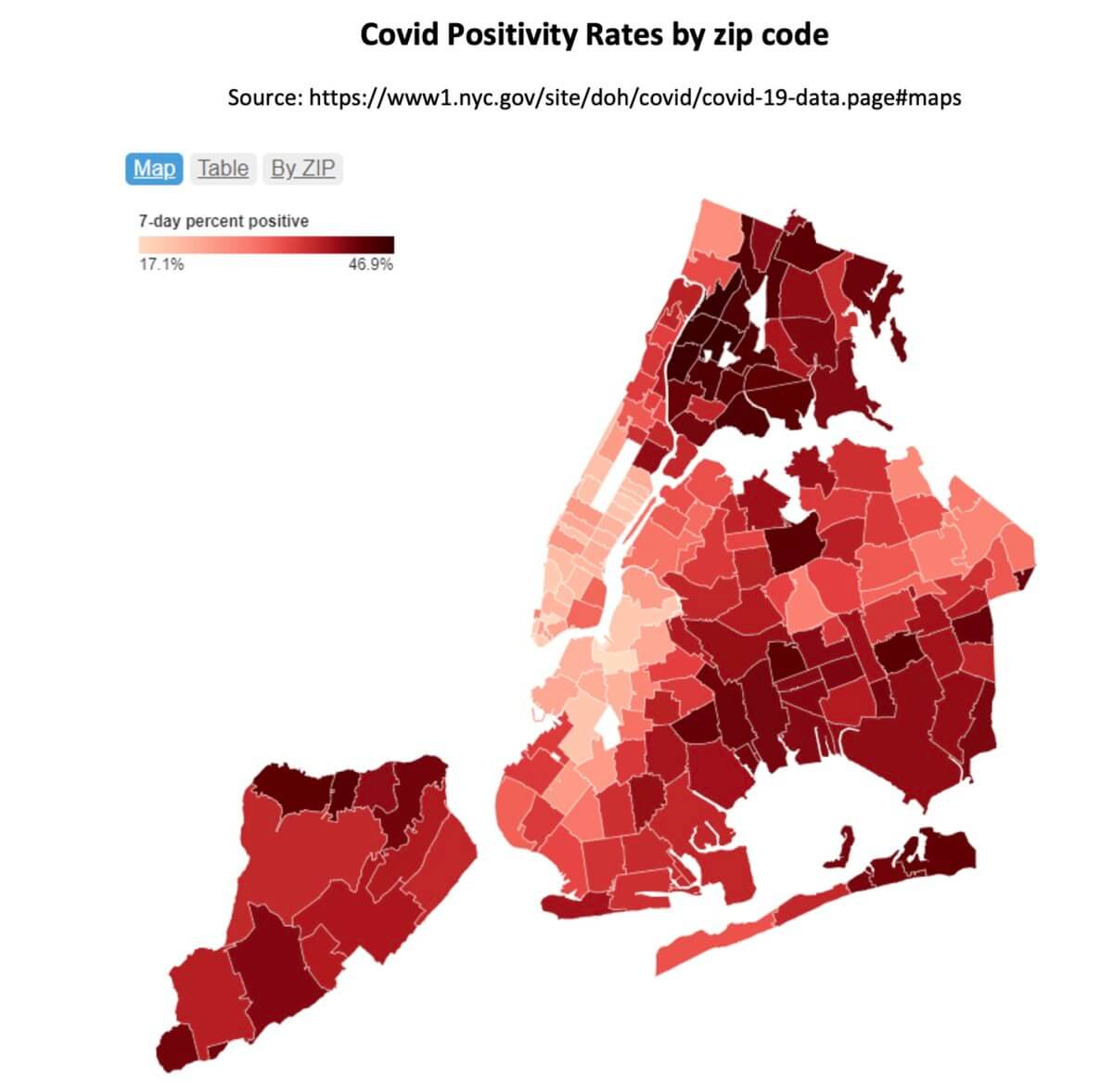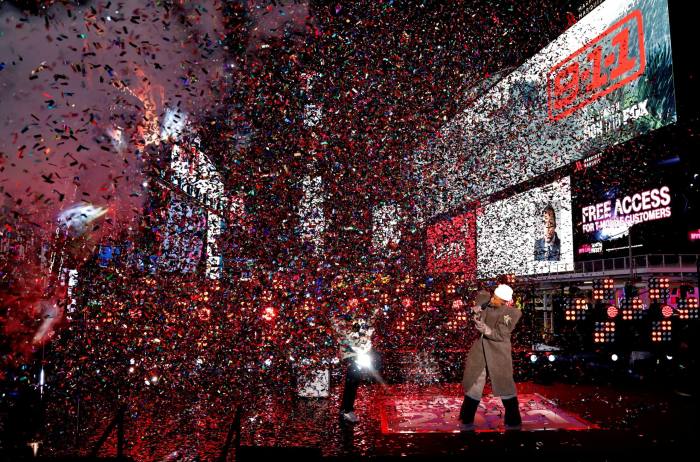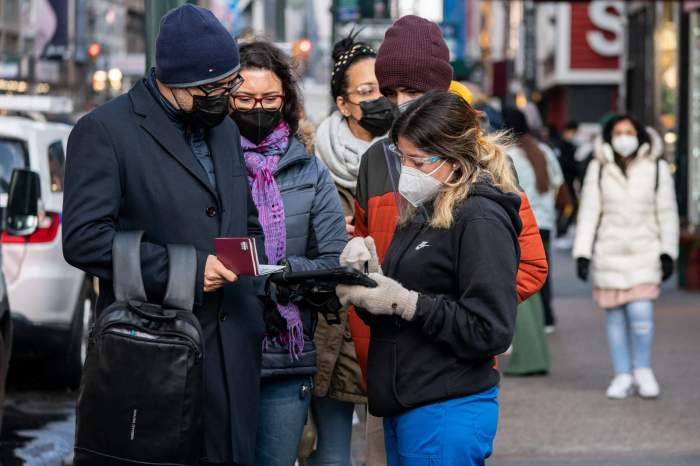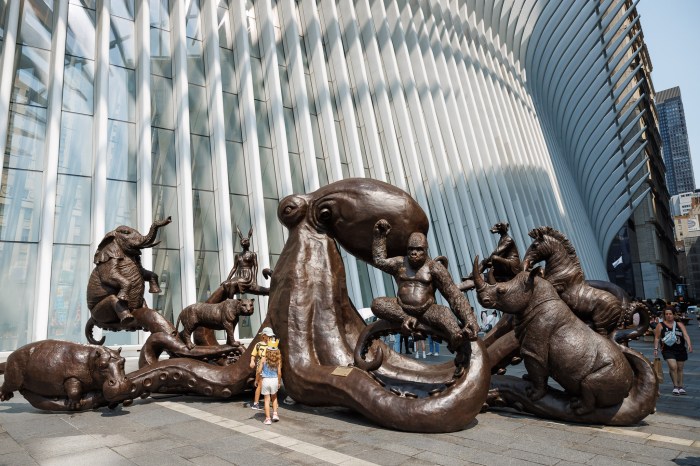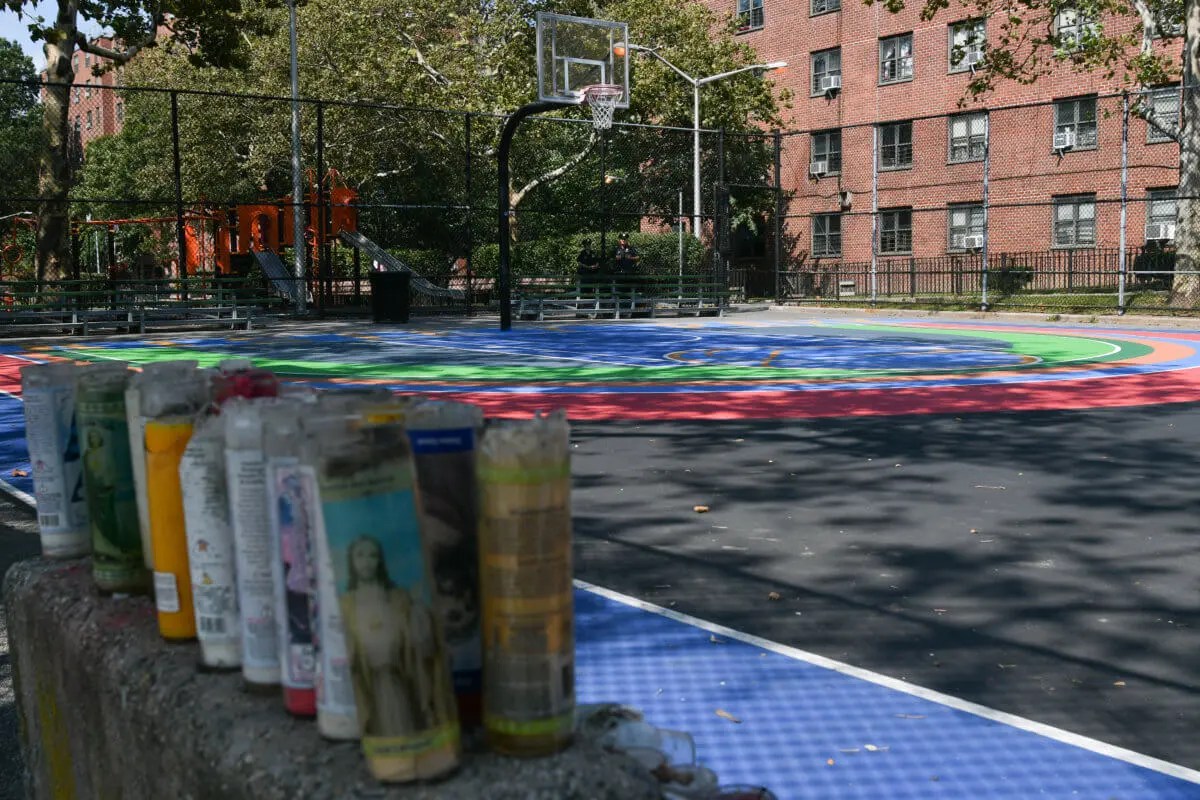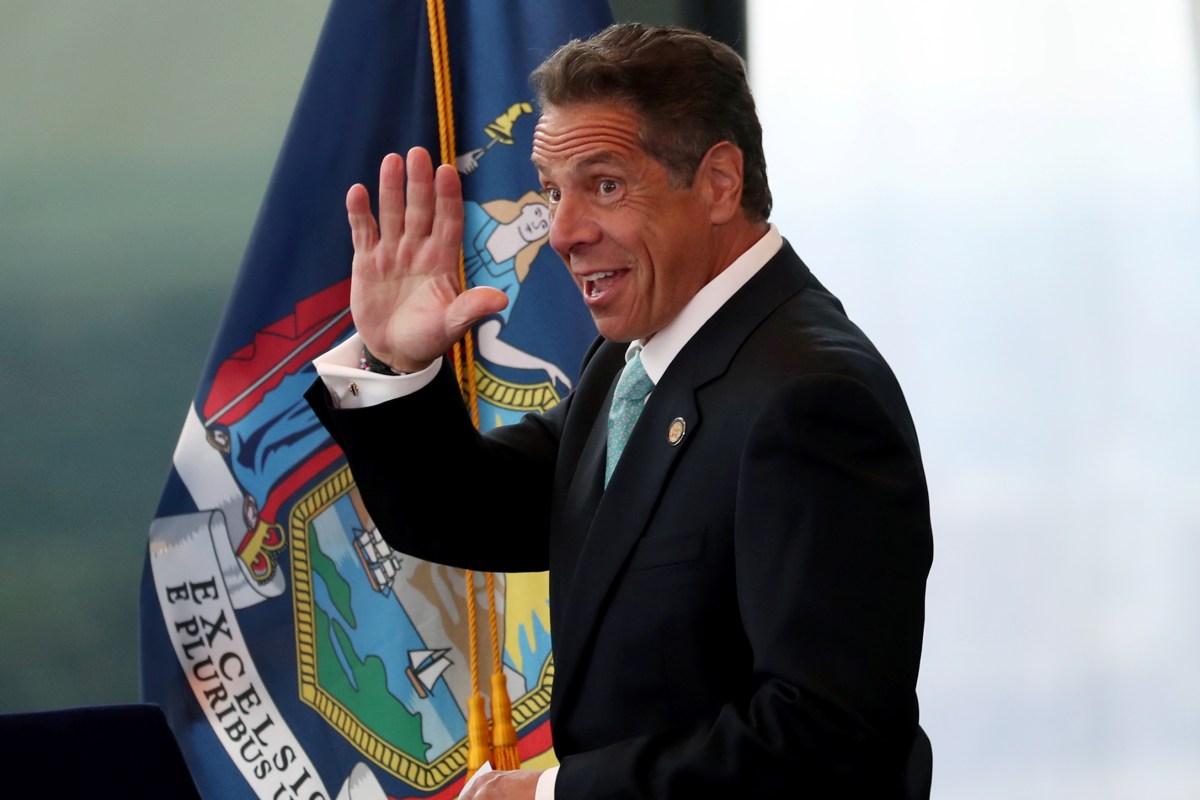New Manhattan Borough President Mark Levine is uniting with three fellow borough presidents in a joint call on the state and legislature to extend the eviction moratorium as its expiration looms like a dark cloud over the city.
Borough Presidents Mark Levine, Vanessa L. Gibson, Antonio Reynoso, and Donovan Richards are making a collective statement advocating for the protection of their respective constituents from mass homelessness and job loss amidst the expiring eviction moratorium and Omicron surge.
“The moratorium on residential and commercial evictions in New York State has become a lifeline for New Yorkers impacted by COVID-19, and an essential tool to help keep New Yorkers safe and housed during this pandemic. It must be extended,” said Manhattan Borough President Mark Levine, Bronx Borough President Vanessa L. Gibson, Brooklyn Borough President Antonio Reynoso, and Queens Borough President Donovan Richards. “The pandemic has been hardest felt in communities of color, where many of our under-paid and underserved frontline workers call home. There are over 203,000 active residential eviction cases open in housing court currently, the vast majority of which are in communities in Uptown Manhattan, the Bronx, Eastern Queens, Central Brooklyn and South East Queens. We can expect that these communities will be the first to feel the negative repercussions of the expiration of this moratorium, and we cannot allow that to happen while COVID-19 case rates are at an all-time high. The State and Legislature must act.”
The eviction moratorium—which prevents the removal of tenants during the COVID-19 pandemic—is set to expire on Jan. 15 and BP Levine says he is extremely concerned about residents’ welfare as Omicron positivity rates soar. Speaking exclusively with amNewYork Metro, he feels there is little time to waste.
“I am extremely worried that the moratorium will be lifted at a moment when there is still economic pain and the Omicron wave has been a setback to our economic recovery,” Levine told amNewYork Metro. “This is not a normal time, and it requires extraordinary measures.”
This is compounded by the startling fact that the majority of tenants facing eviction are taking place within neighborhoods hardest hit by the deadly virus, and this in areas that are predominately communities of color such as Eastern and Southeast Queens, Central Brooklyn, and Upper Manhattan.
According to statistics compiled by BetaNYC courtesy of the Housing Data Coalition, 35% of active eviction cases are in the Bronx, 24% in Brooklyn, 21% in Manhattan, 17% in Queens, and 2% in Staten Island.
“We compared the maps of the communities hit hardest by COVID—the communities with the greatest number of evictions currently pending and there was almost total overlap because it is less-income neighborhoods with communities of color which have been hit hardest by this crisis,” Levine said.
The pandemic has exacerbated the inequities these areas already face, and with the impending rent moratorium ending they will continue to bear the brunt of the economic crisis induced by COVID-19. Levine shared a detailed map that shows in comparison the New York City residential eviction filings by zip code, which closely mirrors another map of the COVID positivity rates by zip code.
“We know that in fact, there are deep links between eviction and public health that one of the reasons why people end up behind on their rent is medical bills because of a crisis in the family and that evictions also are a threat to people’s health, for obvious reasons. So, there’s a deep link between health and evictions. And you see it pretty starkly if you compare the neighborhoods with the highest impact of COVID and the neighborhoods seeing the most evictions. So, this is also not just an economic justice issue, but also a racial justice issue for sure,” Levine said.
While Levine is calling for an extension, which he urges the state and legislature to act upon immediately, he also adds that it will buy the time necessary to implement more protections for tenants such as fully funding the Emergency Rental Assistance Program (RAP)—a program ran out of money quickly—and ensures that each tenant facing eviction post moratorium has an attorney to fight for them in housing court.
“There’s no doubt that we need more time to ensure that our right to counsel system is adequately resourced and ready to handle a spike in evictions post moratorium,” Levine said, “It’s impacted life in New York in many ways and to lift the eviction moratorium on January 15, which may actually be around the peak of the Omicron wave is just really bad timing.”



